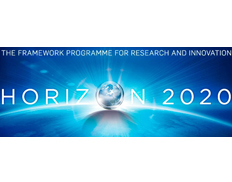Share
Print

Call updates:
A revised version of the Frequently Asked Questions has been uploaded under Call Documents – version 24 March 2015
The flash info about the evaluation result of the call is now available in the "Additional Documents" section.
10 December 2014 08:42 The submission session is now available for: MG-1.9-2015(RIA)
| Topic identifier: | MG-1.9-2015 | ||
| Publication date: | 11 December 2013 | ||
| Types of action: | RIA Research and Innovation action | ||
| DeadlineModel: Opening date: |
single-stage 10 December 2014 |
Deadline: | 23 April 2015 17:00:00 |
| Time Zone : (Brussels time) | |||
Specific challenge: In order to leverage resources, mitigate risks and establish long term relationships, the European aeronautics sector should identify topics of common interest and mutual benefit with other regions of the world, in particular where these address societal challenges such as a worldwide safe and environmental-friendly air transport system, common standards (including for environmental aspects) and win-win situations for technological development. Aeronautics has inherently and increasingly an international dimension because almost all current aircraft programmes involve stakeholders from many different countries. Several areas of mutual interest with Canada have been identified through previous actions, such as the FP7 support actions CANNAPE (EU-Canada) and IFARs (multinational aviation research forum).
Scope: For the coming years, coordinated research and innovation actions with Canada, involving the appropriate funding from both sides, should address one of the following specific areas of common interest between Europe and Canada:
– Reducing environmental impact through advanced design of novel aircraft configurations. In order to decrease fuel consumption and the environmental footprint of aviation, the efficiency of future aircraft should be increased. Different aircraft configurations can be explored in comparison to the standard tube-and-wing concept. Research work should aim at new and enhanced methods in design to enable advanced and novel aircraft configurations with reduced overall emissions. Among others, novel multidisciplinary optimisation tools can be complemented with analytical and numerical research. Experiments on specific advanced technologies can be also included.
– Reducing noise through novel materials design and application on engines and/or airframes. For achieving noise reduction goals, a better understanding of the complex phenomena associated to the absorption of acoustic energy is needed together with advanced technologies to further reduce the noise from the airframe and the engines. Research work should aim at new designs and new application of materials with a potential of achieving next step reductions in airframe and/or engine noise, with the lowest negative impact on performance, weight and cost. Research can include proof-of-concept experiments to validate the understanding of noise reduction mechanisms.
– Resource-efficient high-performance advanced-materials product development and manufacturing. The increasing use of advanced materials in aircraft together with the demand for sustainable production requires new advanced technologies for the aeronautical industry. Research work should aim at more efficient product development and manufacturing in terms of use of resources, time and costs. Among others, research could include aspects related to green materials and processes and manufacturing automation.
– Reducing energy consumption through more electrical aircraft and systems integration. Electrically-driven systems are increasingly used in aviation, aiming at increasing propulsion efficiency and reducing environmental impact and costs. Research work should aim at development and optimised integration of electrical systems in future aircraft to minimise overall energy consumption. Among others, research could include aspects related to highly integrated systems, incl. health monitoring.
The Commission considers that proposals requesting a contribution from the EU between EUR 1.3 to 1.8 million would allow each specific area to be addressed appropriately. Nonetheless, this does not preclude submission and selection of other proposals requesting other amounts.
Expected impact: Actions will demonstrate their potential to mature the level of readiness of technologies and concepts, identify how the project results will be of mutual benefit and evaluate the leverage effect resulting from the coordinating research and innovation funding of EU and Canada.
Type of action: Research and Innovation Actions
